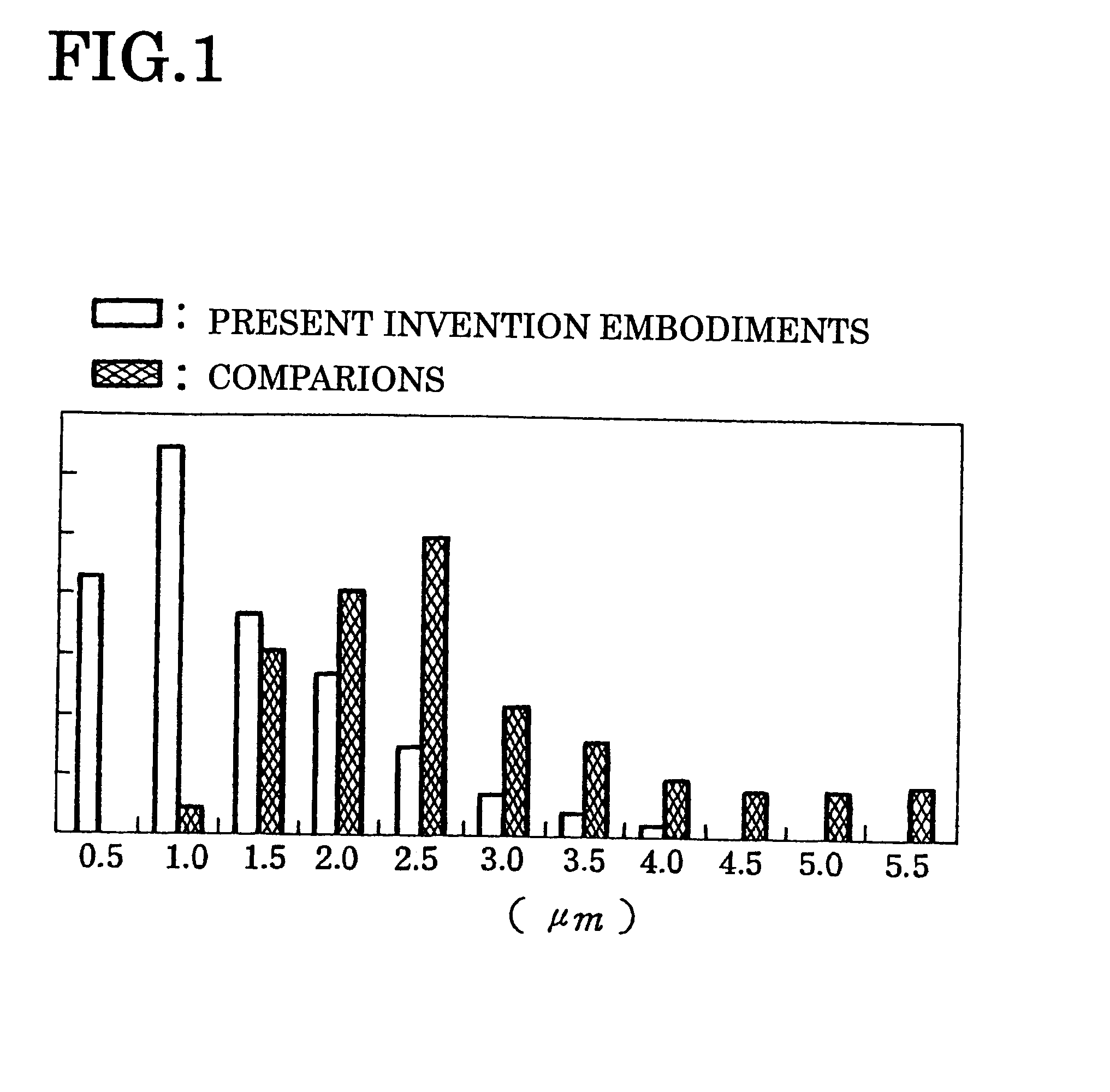Manufacturing method for semiconductor gas-phase epitaxial wafer
a manufacturing method and semiconductor technology, applied in semiconductor/solid-state device manufacturing, basic electric elements, electric devices, etc., can solve the problems of insufficient oxygen outward diffusion, high speed of silicon semiconductor device integration, and increasing demands on silicon wafer characteristics
- Summary
- Abstract
- Description
- Claims
- Application Information
AI Technical Summary
Benefits of technology
Problems solved by technology
Method used
Image
Examples
embodiment 1
A 12-inch diameter CZ silicon wafer, which had undergone a slicing process and a flat grinding process, was subjected to polishing to remove around 10.about.30 .mu.m from both the front and back sides of the wafer, using a two-sided mirror-finish polishing apparatus. After which, a CVD film was grown on the backside of the wafer, the CVD film was removed from the edge-contoured portion, and the main surface of the wafer was finished by one-sided mirror-finish polishing using two-sided mirror-finish polishing apparatus to remove around 2 .mu.m. The flatness of 100 wafers thus produced was measured using an electrostatic capacity-type sensor, and a laser displacement gauge. The flatness variations thereof are shown in FIG. 1.
Compararison 1
A 12-inch diameter CZ silicon wafer, which had undergone a slicing process and an edge contouring process, was subjected to a lapping process. After which, the backside was etched, and a CVD film was grown on the backside. Then the CVD film was remov...
embodiment 2
When a CVD film and thermal oxide film are formed on the backside of a wafer that has been polished on both sides, the above-mentioned film is also formed on the peripheral surface of the wafer, where Si aggregates are readily formed. Embodiment 2 makes it possible to remove the above-mentioned film, which is formed either on this wafer peripheral surface, or for about 0.about.5 .mu.m toward the backside of the wafer from the peripheral surface, and furthermore, makes it possible to clamp a wafer in a rotating drive shaft chuck, and to remove the film from the peripheral surface of the wafer, and from the above-mentioned range of the in-plane portion by applying a head with a built-in non-woven fabric cloth impregnated with etchant to the film to be removed from the peripheral surface and other portions of the wafer while rotating the wafer around the drive shaft. It was ascertained that the same effect as that of the first embodiment is achieved.
embodiment 3
Embodiment 3 clamps a wafer in a rotating drive shaft chuck, and removes the film from the peripheral surface of the wafer, and from the above-mentioned range of the in-plane portion by applying a head with a built-in abrasive grain-holding tape film to the film to be removed from the peripheral surface and other portions of the wafer while rotating the wafer around the drive shaft. It was ascertained that the same effect as that of the first embodiment is achieved.
PUM
 Login to View More
Login to View More Abstract
Description
Claims
Application Information
 Login to View More
Login to View More - R&D
- Intellectual Property
- Life Sciences
- Materials
- Tech Scout
- Unparalleled Data Quality
- Higher Quality Content
- 60% Fewer Hallucinations
Browse by: Latest US Patents, China's latest patents, Technical Efficacy Thesaurus, Application Domain, Technology Topic, Popular Technical Reports.
© 2025 PatSnap. All rights reserved.Legal|Privacy policy|Modern Slavery Act Transparency Statement|Sitemap|About US| Contact US: help@patsnap.com


